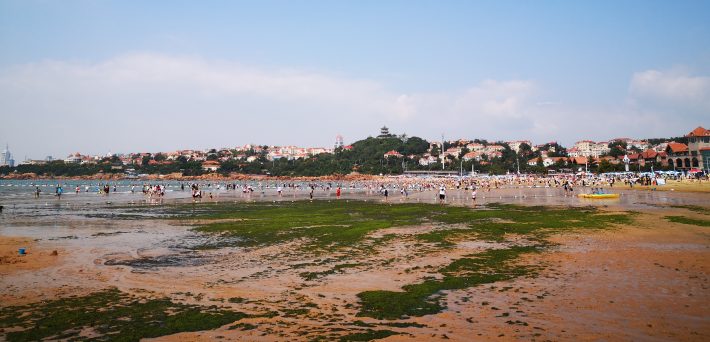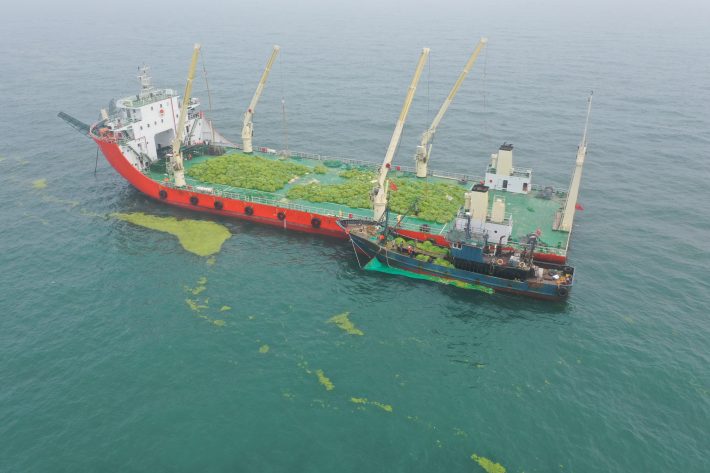Human activities and underlying mechanism of green tide formation
Chinese Academy of Sciences press release.
Research published in the Journal of Applied Ecology proposes a novel mechanism behind the formation of green tides, which can be ecologically damaging, and explores the relationship between this mechanism and human activities.

Green macroalgal blooms (green tides), which lead to significant impacts on marine ecology and economies, have occurred in more locations across the world, and both the frequency and scale of green tides have increased sharply. In the Yellow Sea, China, the world’s largest green tides have recurred since 2007. Although many studies and hypotheses have been proposed, the exact mechanism of green tide formation remains unclear.
Researchers from institute of oceanology, Chinese Academy of Sciences (IOCAS), reviewed and analysed previous studies and data concerning environment and green tides in the Yellow sea. Through analyses combined with their studies, they proposed a novel mechanism of green tide formation and illuminated the relationship between this mechanism and human activities.
“Green tides in the Yellow Sea are representative and perfect samples for studying the ecological issues concerning green tide because of large scale and constant periodicity of bloom. More importantly, there are adequate studies related to them which can be referred and analysed for us,” said Guangce Wang, a professor from IOCAS and correspondence author of the article.

The findings showed that escalating marine nitric oxide generation and its essential role in sporulation of Ulva, which are mainly responsible genus for green tides, are underlying and significant components in the mechanism of green tide formation. Escalating nitric oxide generation in both Ulva cells and marine environment is caused mainly by human activities including industrialisation, urbanisation, environmental protection, and even certain species aquaculture.
On the basis of findings, researchers revealed key process of green tide formation and proposed an innovative wastewater treatment programme combined with Ulva application to fulfil the standard of sustainable development and circular economy.
Researchers also suggested directions for future research as well as strategies and policy developments for green tide control. They appealed that both newly industrialising countries and industrialised countries should carried out appropriate and comprehensive measures to control green tide.
“We must realise that increasing green tides around the world are not independent incidents but one of the consequences of global changes which result from human activities,” said Guangce Wang.
Read the article (free for a limited time) here:
https://besjournals.onlinelibrary.wiley.com/doi/10.1111/1365-2664.13587
Media contact:
Fengfan Yang, Public Information Officer, Institute of oceanology, Chinese Academy of Sciences
TEL: +86(0)532 82898623
E-mail: fengfanyang@qdio.ac.cn
Like what we stand for?
Support our mission and help develop the next generation of ecologists by donating to the British Ecological Society.